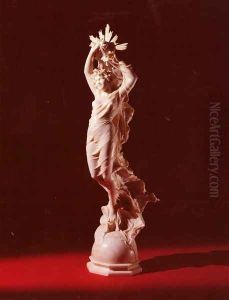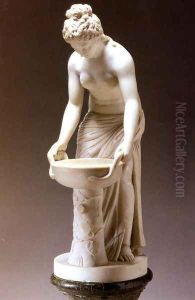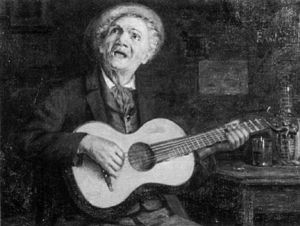Ferdinando Andreini Paintings
Ferdinando Andreini was an Italian sculptor born in 1843 in Florence, Italy, during a period when the region was experiencing a resurgence of artistic and cultural expression known as the Italian Renaissance Revival. He trained at the esteemed Accademia di Belle Arti di Firenze, where he was influenced by the neo-classical style and the romantic spirit that pervaded the art scene in the mid-19th century.
Andreini's work was characterized by its classical themes, often drawing on mythology and history for subject matter. He was skilled in marble carving, and his sculptures were noted for their intricate detail and expressive realism. His works were often large in scale, and he received commissions for both public monuments and private collections.
During his lifetime, Andreini's sculptures were exhibited in various Italian cities and garnered critical acclaim. He was part of the artistic milieu that sought to revive the grandeur and craftsmanship of the Renaissance masters. Among his notable works are sculptures that adorn public spaces and cemeteries, reflecting the somber and reflective aesthetic of the era.
Ferdinando Andreini passed away in 1922, having contributed a significant body of work that reflected the transition in Italian art from the grandeur of the 19th century to the more introspective and experimental approaches of the early 20th century. His legacy is preserved in the collections of Italian museums and in the public spaces that continue to showcase his artistry.


